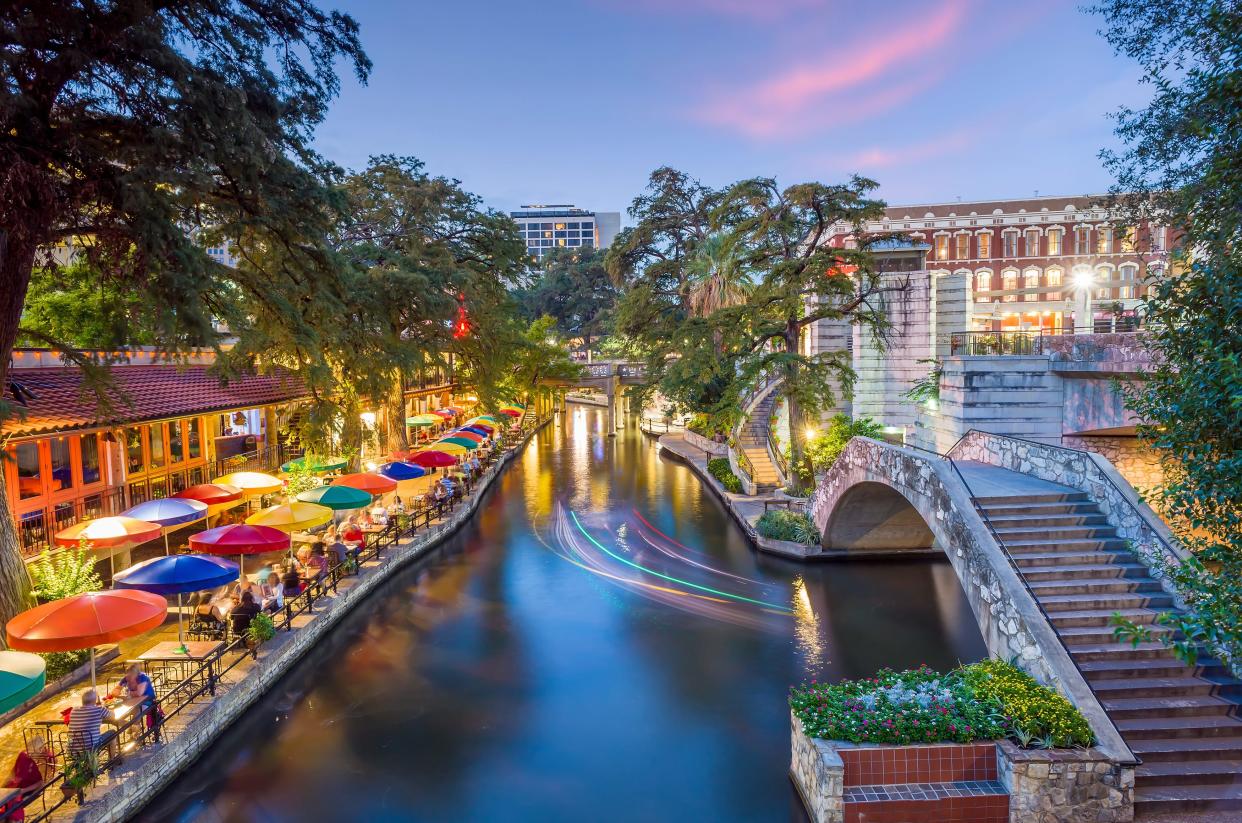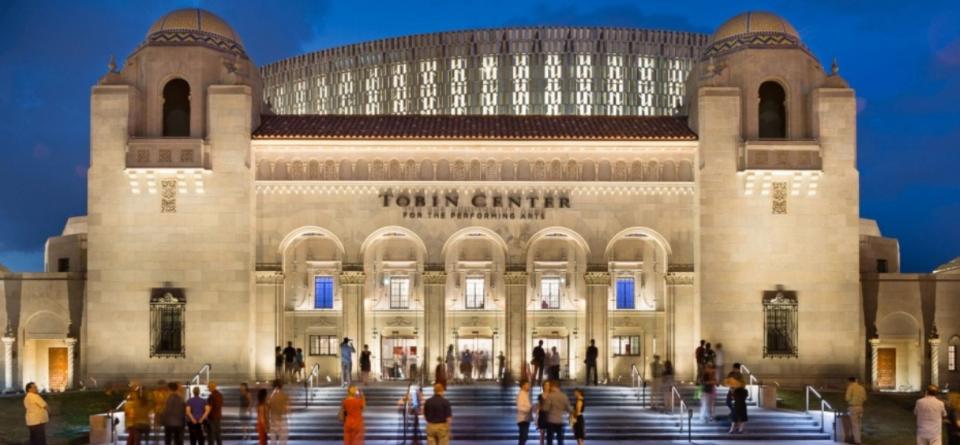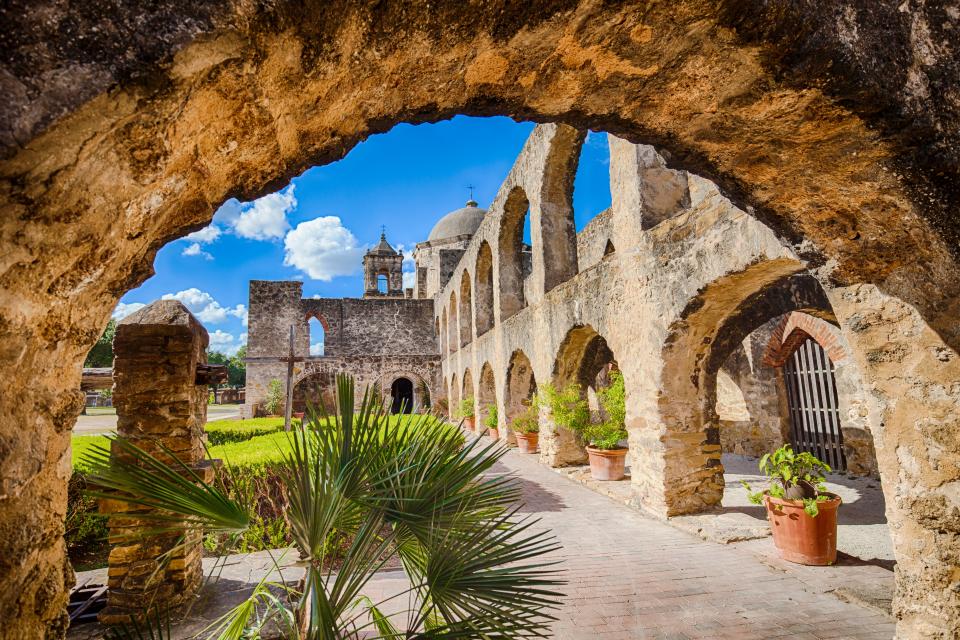Meet me in San Austin: It's time to explore the idea of an Austin-San Antonio 'mega-metro'

Austin and San Antonio should get to know each other better.
After all, at some point in the not too distant future, the two cities will share a single "mega-metro."
That's the term that the San Antonio Express-News and San Antonio public television station KLRN have recently used for our apparently inevitable destiny as a consolidated metropolitan statistical area.
The concept of an interconnected Central Texas metro is not new. But it appears to be gaining traction again.
Leaders of our two cities, currently home to a combined population of more than 5 million residents, have been meeting since 1984 under the aegis of the Greater Austin-San Antonio Corridor Council. There was hope for some years of a commuter rail link between the region's two main cities, but the use of the existing freight rail tracks — the most obvious option — proved too hard to nail down.
More: Texas drought exposes resting place of five sunken World War I ships in Neches River
Currently, San Antonio and Austin are two of the 10 most populated cities in the country. Their combined metro areas, which would include Round Rock, San Marcos, New Braunfels and more, would place our mega-metro just ahead of Phoenix–Mesa–Chandler, ranking it No. 10 among American metro areas.
Culturally, San Antonio and Austin don't act like twin cities. In places such as Dallas-Fort Worth, Minneapolis-St. Paul and San Francisco-Oakland, one partner dominates. In others, like Tampa-St. Petersburg, not so much.
Historically, Dallas and Fort Worth fought tooth and nail for ascendency, but came together with other North Texas spots like Arlington — now one of the state's biggest cities! — to build Dallas Fort Worth International Airport.
Aside from the topic of breakfast tacos, Austin and San Antonio rarely indulge in public rivalry.
While we're on the subject, my recent reporting on Greater Lubbock revealed a West Texas disdain for our dueling Central Texas breakfast tacos. They prefer heartier burritos, especially as served by Allsup's convenience stores. One member of our road-trip party witnessed a near dustup over the last chimichanga at a store in Sweetwater.
San Antonio is better at pro sports, Austin at collegiate athletics. The more southern city has turned its 300+ years of history and its Hispanic-majority culture, along with traditional manufacturing and distribution, into enormous assets. Its northern neighbor has kept the edge in technology, music, movie-making, higher education and the arts.
Instead of a bitter rivalry, in many ways, Austin and San Antonio have been acting more like collaborative partners, supporting each other's strengths, at least in the business world.
“I think in reality, we've been a mega region and operating as a mega region for a period of time now for at least a decade,” Will Conley, former CEO of the Greater San Marcos Partnership told Chris O'Connell, the veteran journalist who has reported on Austin and our incipient "mega-metro" with keen insight for the Express-News' digital site since January 2022.
Tell me about your San Antonio
Some of you are thinking: As the designated Think, Texas columnist for the American-Statesman and the USA Today Network, what, Michael, have you been reporting lately on San Antonio?
Very little. And since the months before the pandemic, nothing in person. Not even a day trip.
That has to change.

San Antonio has preserved more sustained Texas history than any other large city in the state. (The book to read is "Saving San Antonio: Preservation of a Heritage" by Lewis F. Fisher.) Galveston ranks a distant second. And yet, the island city has been the subject of four columns since Think, Texas premiered in 2019. In contrast, San Antonio has made cameo appearances.
Time to make up for lost time.
More: Here are 10 reasons why Corpus Christi is the most promising city in Texas
I'm planning an autumn trip to San Antonio to gawk at the recently unveiled artifacts from the Battle of Medina at the Witte Museum, and to visit the newly opened Ralston Family Collections Center at the Alamo. Among other things, the center houses the Phil Collins Collection of Alamo-themed artifacts.
Loyal readers know what happens next: An appeal to send your best San Antonio historical, cultural and culinary picks to mbarnes@gannett.com. Readers are the best road trip guides.
My San Antonio memories
At different times, both my parents lived in San Antonio, as did their parents.
Many of their memories were concentrated in the area around San Pedro Springs Park. My mother attended high school and at least one year of college at what is now Our Lady of the Lake University.
My childhood visits to the city were associated with the Alamo, the Riverwalk, Brackenridge Park and the neighborhoods where my parents and older relatives had lived.
More: When you go to Waco, and you should, visit these 10 tourist hotspots
Although I knew the standard tale of the Alamo backwards and forwards — I first saw John Wayne's gung-ho and thinly historical movie version in 1960 at a drive-in theater on the Old Mansfield Road in Shreveport, Louisiana — I was more impressed as a child by the Riverwalk than by the Spanish mission.
An early and mostly successful attempt at urban renewal, the Riverwalk harnessed the flow of the river beneath ancient structures such as La Villita Historic Village and nearby Casa Navarro Historic Site, as well as beautiful old towers and posh new hotels. The clear urban references, even to a child, were European, or perhaps Latin American.
The area directly around the Alamo was not as uplifting. The plaza was a mish-mash of kitsch and well-intentioned historicism. The convention center broke up the pedestrian flow and some areas around the former Hemisfair '68 grounds appeared empty and bleak at the time.
Nearby, however, was the Institute of Texan Cultures, then considered a forward-thinking anthropological museum and research center, which has undergone welcome rethinking over the years.
As a young adult, I typically hit the high points: lunch at some obscure Tex-Mex joint, reverential visits to the King William District, Blue Star Arts Complex, San Antonio Museum of Art, Witte Museum, McNay Art Museum and Tobin Collection of Theatre Arts. Then drinks and a stroll along the Riverwalk, maybe catching a touring show at the Majestic Theatre, stopping late at Jim Cullum's Landing Jazz Club or the multilevel Bonham Exchange nightclub.
If more than a day trip, I'd always save plenty of time for the San Antonio Zoo, which is carved into the natural landscape of Brackenridge Park. Once, a group of wayward friends and I got conveniently lost after the zoo's gates had closed and we experienced the behavior of the animals after dark. We should have known better, but where were the keepers?

Over the course of decades, I had skipped the four other San Antonio missions that weren't the Alamo. I have no idea why. When I finally explored these gems along the San Antonio River, I was awestruck by the churches and grounds that constitute a National Historical Park and UNESCO World Heritage Site. A good portion of Mission San José is not original, but even the replacement parts are considered historic now.
More: On the West Texas road again: 10 must-see spots to visit in historic San Angelo
What about the Alamo? I've tried to stay as far as possible away from the recent and spiky battles surrounding the hallowed site, which are already thickly covered by the media. Visitors, especially from Texas, see the history they want to see there.
I appreciated "Forget the Alamo: The Rise and Fall of an American Myth" by Bryan Burrough, Chris Tomlinson and Jason Stanford. More recently, I've reread Stephen Harrigan's historical novel, "The Gates of the Alamo," revisionist in its own time and still an absolute joy.
This project of relearning San Antonio requires sustained effort over multiple visits. If we are truly to become a "mega-metro," we must pay attention.
Michael Barnes writes about the people, places, culture and history of Austin and Texas. He can be reached at mbarnes@gannett.com. Sign up for the free weekly digital newsletter, Think, Texas, at statesman.com/newsletters, or at the newsletter page of your local USA Today paper.
This article originally appeared on Austin American-Statesman: As Austin and San Antonio grow, what we know about the Alamo City

